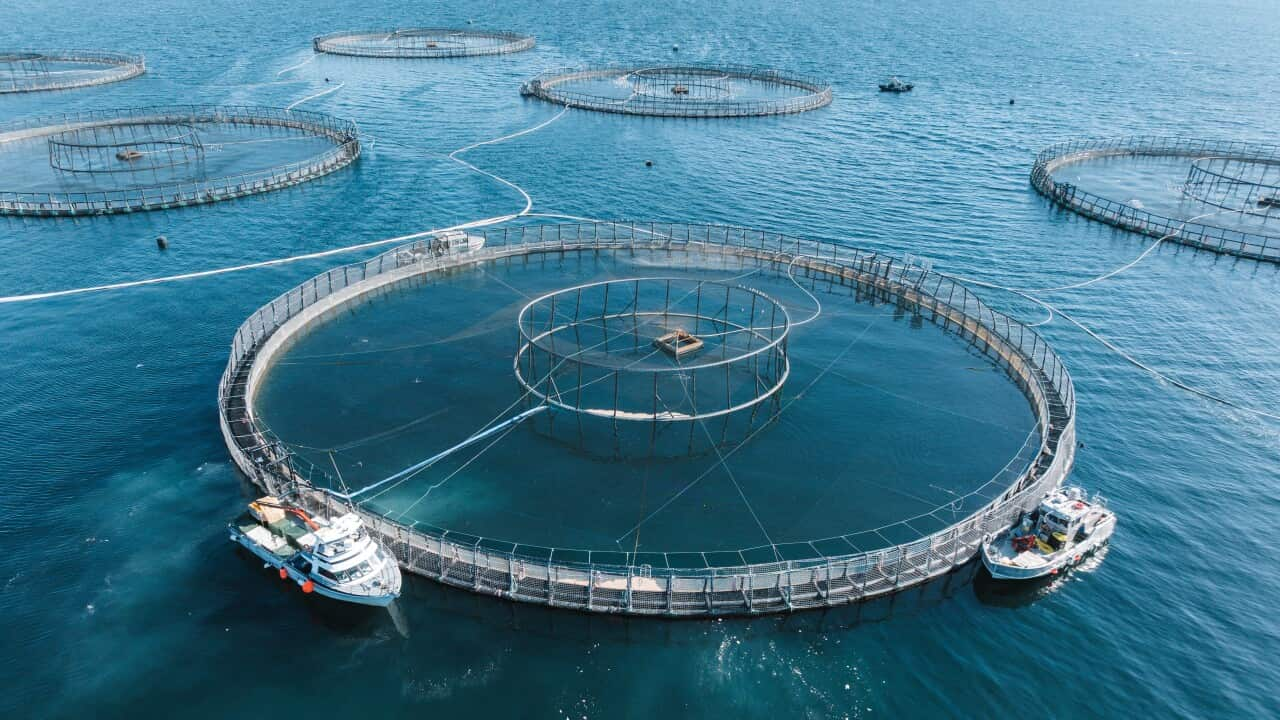Salmon farming is in the spotlight as a bill to preserve the jobs in the industry in Tasmania's Macquarie Harbour has passed both houses of parliament just days before the federal election is expected to be called.
Environmental groups and the Greens have renewed concern over of the aquaculture, with mass deaths of farmed salmon recorded in recent weeks.
Huon Aquaculture, which has had , has said deaths in its pens have been caused by rickettsia bacteria disease, and after footage emerged of workers sealing live, twitching fish in a tub.
For some, it has also raised questions over whether the farmed salmon is safe for human consumption.
Independent Tasmanian MP Andrew Wilkie has called for an inquiry into the state's salmon industry and to investigate whether diseased fish is being sold to the public.
But supermarkets say their supply chains are robust, and authorities and some experts say that, even if diseased fish was being sold, the bacteria that has been blamed for salmon deaths would not put consumers' health at risk.
Is diseased salmon making its way to supermarket shelves?
Eloise Carr, director of The Australia Institute's Tasmania branch, has worked in marine conservation and fisheries.
The Hobart-based academic told SBS News the outbreak is cause for further investigation.
"There's been little to no reassurance that those diseased fish won't end up on supermarket shelves," she said. "I think people should be very concerned if they're still eating salmon."
But some experts doubt the rickettsia bacteria would make humans sick.
"There are many, many diseases, animal diseases, human diseases, and often those diseases are specific for the particular animal or human and they don't always cause an illness in a different species," said Cathy Moir, a food microbiologist.
Tasmania's Department of Natural Resources and Environment has previously said the bacteria didn't pose a "human or animal health, or food safety risk".
But while the bacterium isn't harmful to humans, it can be lethal for salmon.

People protested against salmon farming at a beach in Verona Sands in southern Tasmania last week. Source: AAP / Ethan James
"This particular disease bacteria is endemic in southern Australian waters. It needs to be cold, so it's not going to spread north," he said.
"But there could be a risk to other wild fish; you don't want aquaculture fish escaping into the wild or transmitting disease."
Those opposed to the legislation that passed parliament on Wednesday have been raising the plight of the Maugean skate, a species that dates back to the Cretaceous period and is found only in Macquarie Harbour on Tasmania's west coast.
Intensive fish farming in the harbour has caused oxygen levels to plummet, posing an existential threat to the species.
A Woolworths spokesperson said demand for salmon was stable and the supermarket wasn't facing supply chain issues.
"We have the strongest processes in place around food safety and every product we sell," the spokesperson said.
SBS News understands the Coles Group is also not facing any supply chain issues related to salmon.
SBS News contacted Huon Aquaculture for comment.
What food safety protocols exist?
Food Standards Australia and New Zealand is the peak body that regulates food safety, setting national standards which jurisdictions have to enforce.
"It is illegal to sell food that is not fit for consumption," Moir said.
"Fit for consumption means that it shouldn't make people sick, whether that's from microbiological contamination, chemical contamination or physical contamination like things like glass and things like that."
Moir said foods that require refrigeration, such as fish, are deemed "potentially hazardous" and must follow strict protocols.
"Potentially hazardous foods generally have a requirement that the producer and the processor need to have what we call a food safety plan in place," she said.
"So that's essentially a risk assessment process that looks at each step of the processing."

According to the Department of Agriculture, Fisheries and Forestry's outlook, the industry's real value is projected to be $2.21 billion by 2029, largely driven by the value of salmon. Source: SBS News
Wild-caught versus farmed fish
Salmon is a major player in Australian fisheries, owing in part to how the fish can be cultivated, or "farmed".
"Salmon is probably the best fish in the world to farm with aquaculture," Booth said.
"They can be crowded in, much like chickens in an industrial setting. They don't seem to be that aggressive towards each other and, therefore, they convert whatever you feed them into meat very quickly. And, of course, they get a very high price."
Booth said there are some differences between farmed and wild-caught salmon.
"There is a little more omega and vitamins and that sort of thing in the wild-caught salmon compared to the farmed," he said.
"But, of course, the farmed variety is subject to much more investigation and study, these days I think it's probably converging on the wild as far as nutritional value."

